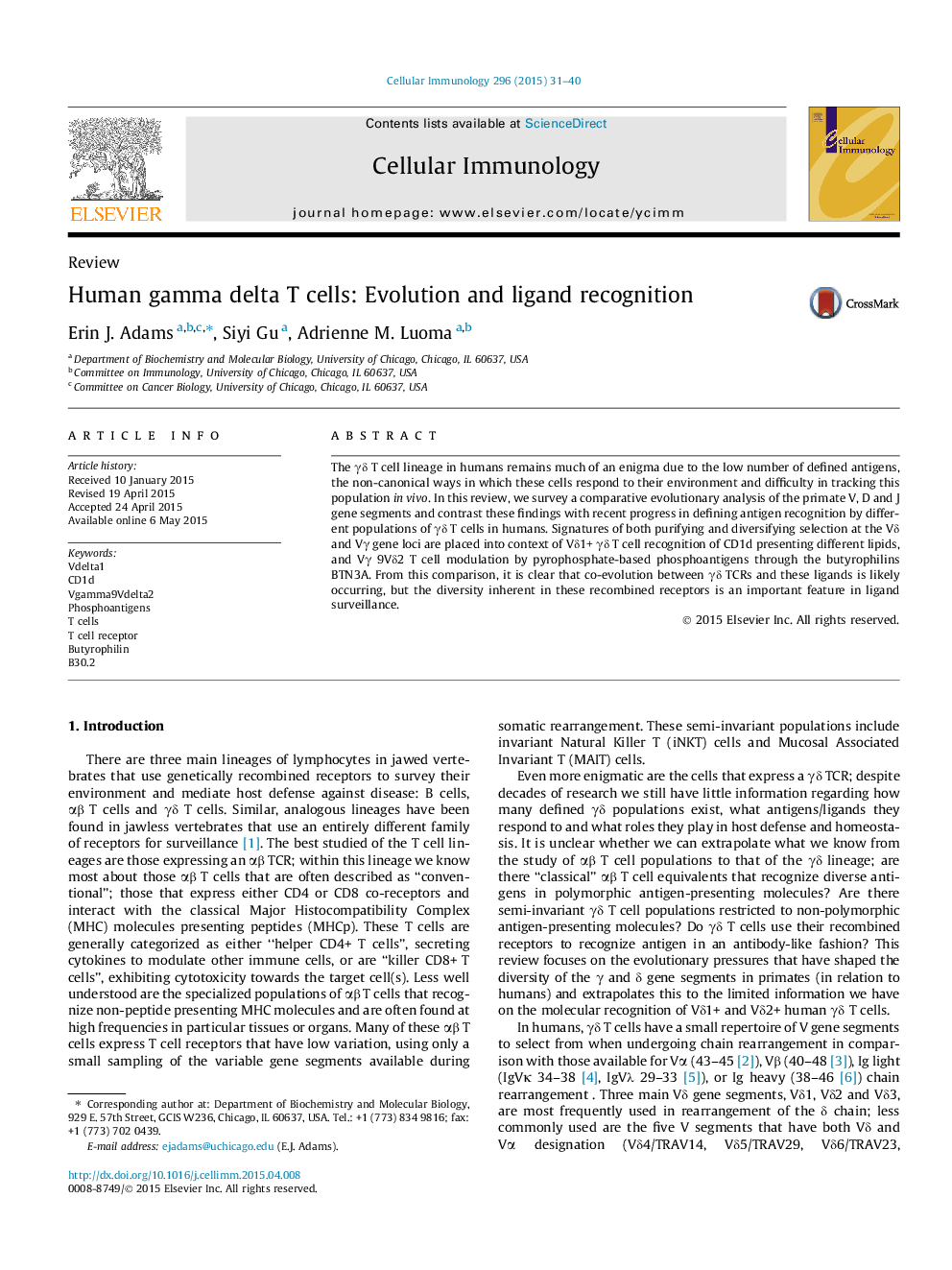| Article ID | Journal | Published Year | Pages | File Type |
|---|---|---|---|---|
| 2166929 | Cellular Immunology | 2015 | 10 Pages |
•We review work on the evolution of primate V, D and J gene segments of γδ T cells.•We also review CD1d-lipid recognition of Vδ1+ γδ and αβ T cells.•Lastly we review recent work on phosphoantigen modulation of Vγ9Vδ2 T cells.
The γδ T cell lineage in humans remains much of an enigma due to the low number of defined antigens, the non-canonical ways in which these cells respond to their environment and difficulty in tracking this population in vivo. In this review, we survey a comparative evolutionary analysis of the primate V, D and J gene segments and contrast these findings with recent progress in defining antigen recognition by different populations of γδ T cells in humans. Signatures of both purifying and diversifying selection at the Vδ and Vγ gene loci are placed into context of Vδ1+ γδ T cell recognition of CD1d presenting different lipids, and Vγ 9Vδ2 T cell modulation by pyrophosphate-based phosphoantigens through the butyrophilins BTN3A. From this comparison, it is clear that co-evolution between γδ TCRs and these ligands is likely occurring, but the diversity inherent in these recombined receptors is an important feature in ligand surveillance.
